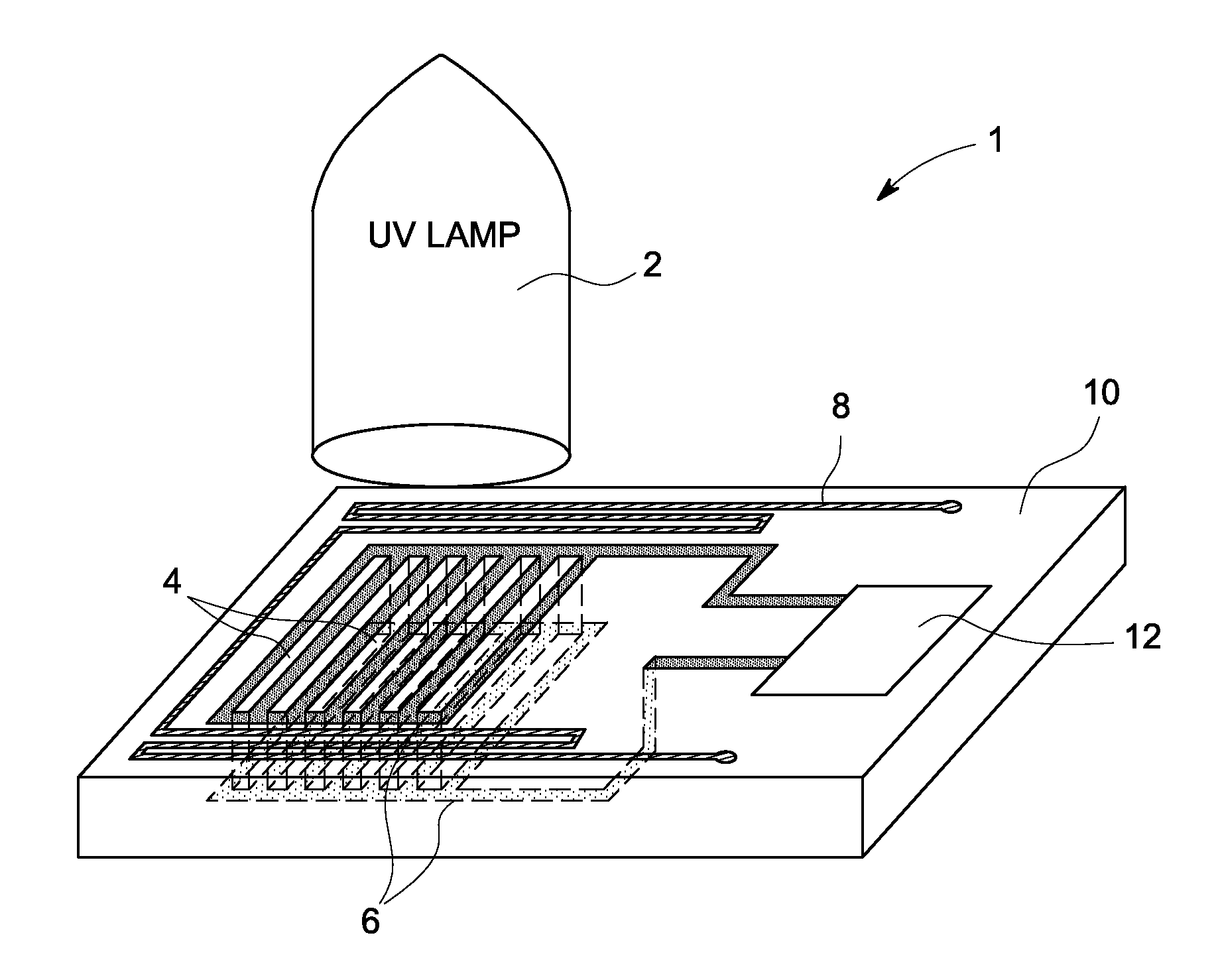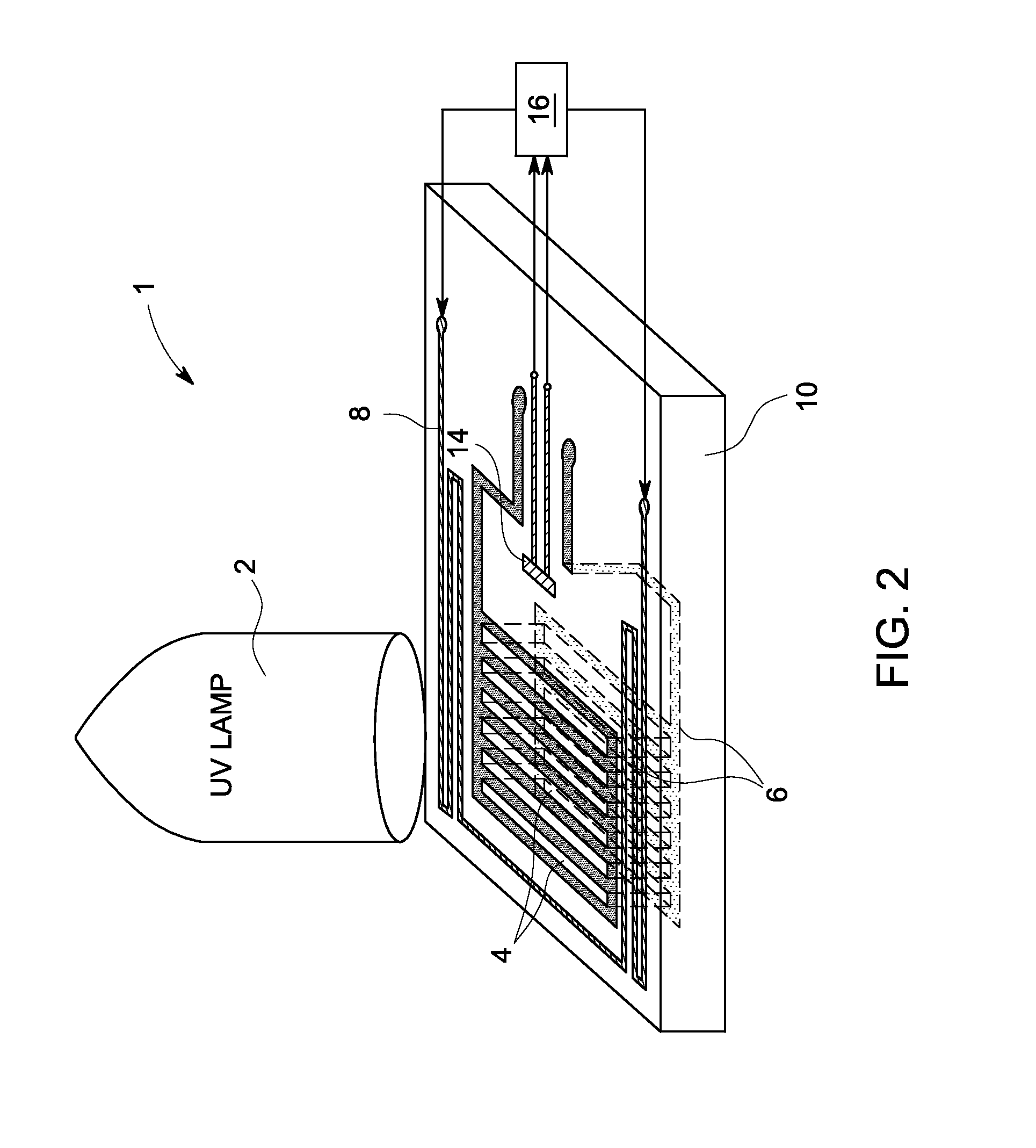Photo-ionization detectors and associated methods thereof
a detector and photo-ionization technology, applied in the field of volatile gas detectors, can solve the problems of reducing detector sensitivity, reducing intensity, and signal artifacts, and achieve the effect of high selectivity and efficiency
- Summary
- Abstract
- Description
- Claims
- Application Information
AI Technical Summary
Benefits of technology
Problems solved by technology
Method used
Image
Examples
example 1
[0056]In human breath, the gas flow rate or pressure during breathing varies from person to person. Separate tests showed that the variation of breath flow rate in the range of 2˜15 L / min is possible. The change of flow rate affects the PID sensor's baseline signal (background signal when acetone is absent), leading to inaccuracy of ion measurement. Tests have indicated that the PID's baseline voltage could change ˜70 mv when gas flow rate was varied from 1 to 20 L / min. The cause for the baseline change might partially because the incoming gas directly impacted on the lamp and sensor electrodes, which resulted a number of effects, such as abrupt changes of temperature, flow rate, relative position, and humidity in the ionization zone, one or the combination of which might result in change of sensor baseline voltage. To mitigate this issue, a gas diffuser plate was designed and implemented in the gas chamber immediately before the PID sensor. The “I” shaped diffuser splits the incomi...
example 2
[0058]In fat-metabolism, the decarboxylation of acetoacetate generates acetone, which is one of the most abundant endogenous compounds in human breath. An amount of acetone in healthy subjects is in a range of about 0.2-10 ppm, and acetone is higher in patients having uncontrolled diabetes. The tests were performed by collecting samples from three different human individuals at two different times of a day. Two breath samples were collected from each human individual through a mouthpiece containing a bacteria filter (Vacuumed MQ303) connected directly to the gas line. The PID sensor was pre-heated to 79° C. to prevent water condensation from human breath. One sample was collected about 1 hour before lunch and another sample was collected about 1 hour after lunch. FIG. 12 and Table 1 show the sensor response pattern (output voltage) for the breath acetone as detected by the PID. Comparing the signals obtained before (FIG. 12) and after (data not shown) lunch, as shown in Table 1, the...
example 3
[0061]Various breath-sampling approaches suitable for the PID were tested. In the experiment, three sampling methods were tested, such as, direct blow through a bacteria filter mouthpiece (Vacumed MQ303), pre-sampled breath stored in a 5 L sampling bag (SKC), and pre-sampled breath stored in a 0.25 L GaSampler bag (Quintron).
[0062]The 5 L sampling bag showed most consistent results compared to other two sampling approaches. Because of large volume, the 5 L bag supplied a stable gas flow over a period of time to the PID to establish a steady signal output. In the direct blow and an approach with 0.25 L bag, the sensor signal was seen dropping upon stopping of gas flow (stop blowing or empty bag). It is expected that when using a bag to collect breath sample, water vapor tend to condensate on the bag wall, which reduces the water concentration entering into the PID sensor chamber, therefore, reducing the water ion interference. This could explain the smaller signal amplitude with 5 L ...
PUM
| Property | Measurement | Unit |
|---|---|---|
| temperature | aaaaa | aaaaa |
| temperature | aaaaa | aaaaa |
| ionization energy | aaaaa | aaaaa |
Abstract
Description
Claims
Application Information
 Login to View More
Login to View More - R&D
- Intellectual Property
- Life Sciences
- Materials
- Tech Scout
- Unparalleled Data Quality
- Higher Quality Content
- 60% Fewer Hallucinations
Browse by: Latest US Patents, China's latest patents, Technical Efficacy Thesaurus, Application Domain, Technology Topic, Popular Technical Reports.
© 2025 PatSnap. All rights reserved.Legal|Privacy policy|Modern Slavery Act Transparency Statement|Sitemap|About US| Contact US: help@patsnap.com



